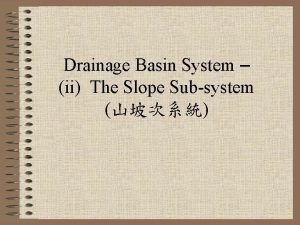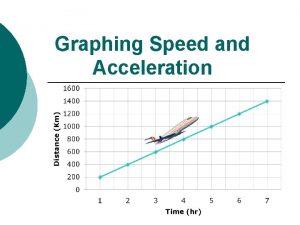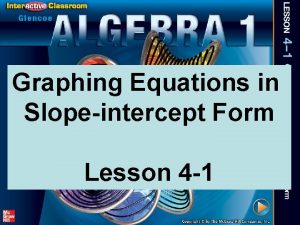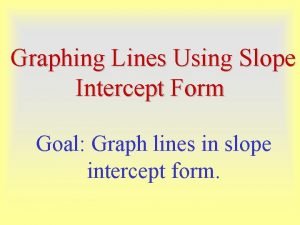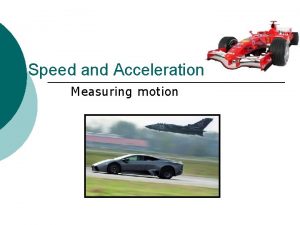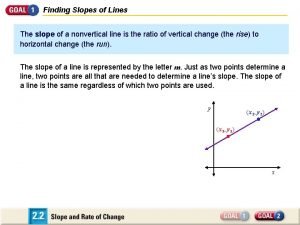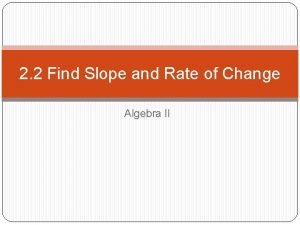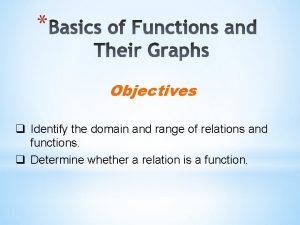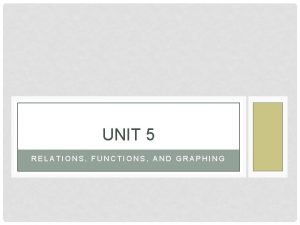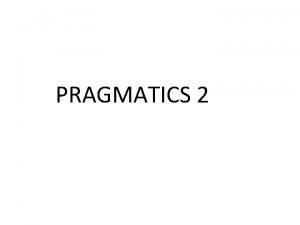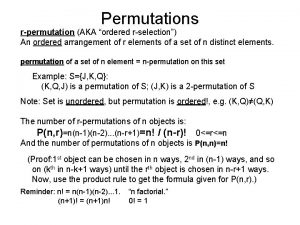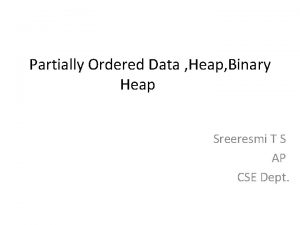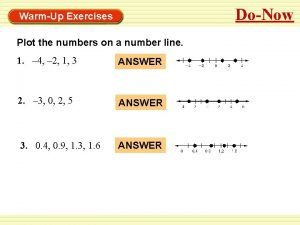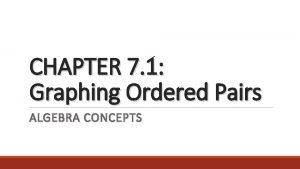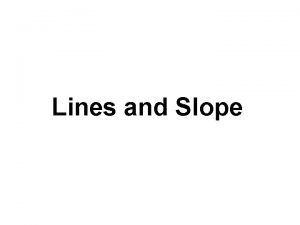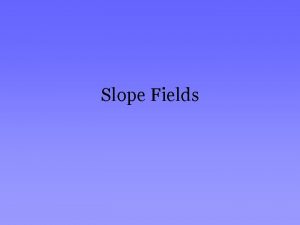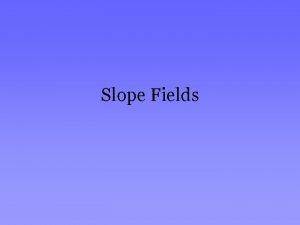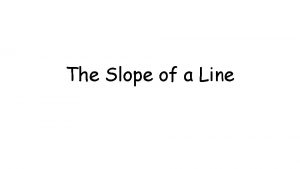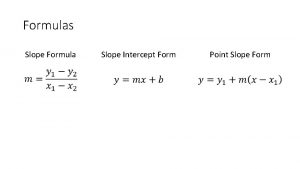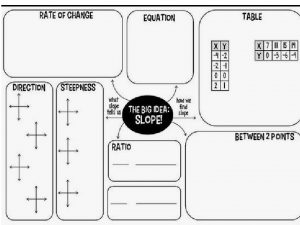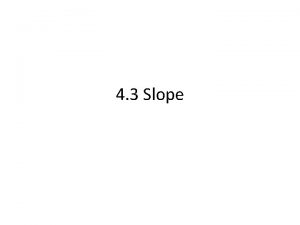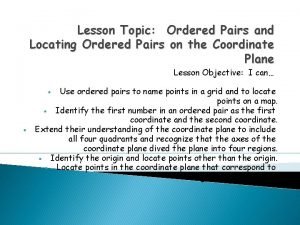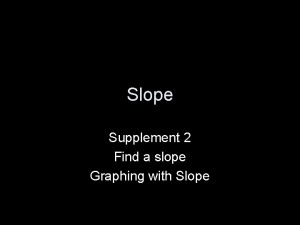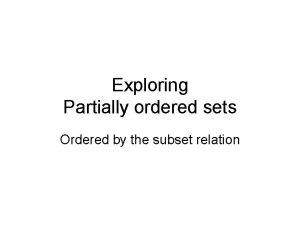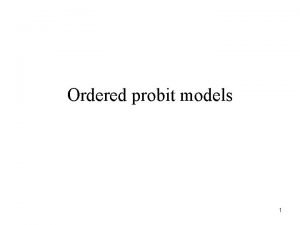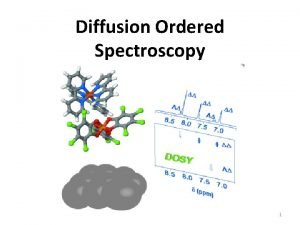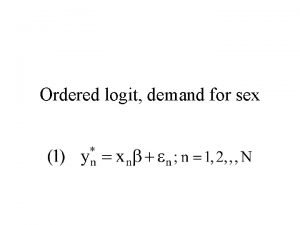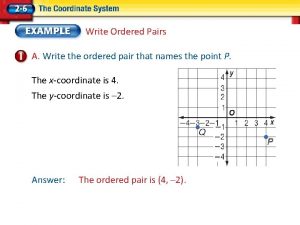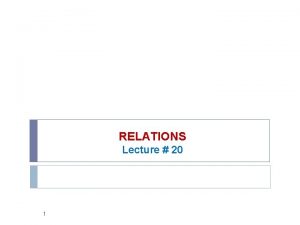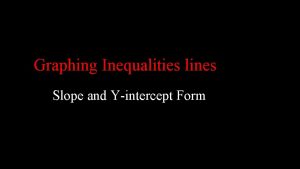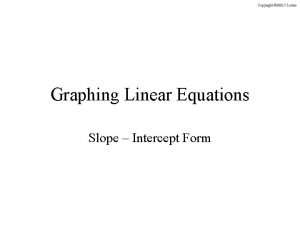SLOPE AND GRAPHING SLOPE AND GRAPHING An ordered


























- Slides: 26

SLOPE AND GRAPHING


SLOPE AND GRAPHING An ordered pair always represents a point.

SLOPE AND GRAPHING An ordered pair always represents a point. An ordered pair is always in the form ( x , y )

SLOPE AND GRAPHING An ordered pair always represents a point. An ordered pair is always in the form ( x , y ) You use the slope to see how much the line goes up and over.

SLOPE AND GRAPHING An ordered pair always represents a point. An ordered pair is always in the form ( x , y ) You use the slope to see how much the line goes up and over. We refer to this as rise and run.

SLOPE AND GRAPHING An ordered pair always represents a point. An ordered pair is always in the form ( x , y ) You use the slope to see how much the line goes up and over. We refer to this as rise and run. As a slope we say m = rise/run

SLOPE AND GRAPHING An ordered pair always represents a point. An ordered pair is always in the form ( x , y ) You use the slope to see how much the line goes up and over. We refer to this as rise and run. As a slope we say m = rise/run We also refer to this as rise over run.

GRAPH THE LINE THAT GOES THROUGH (2, 3) AND HAS A SLOPE OF 4/1

GRAPH THE LINE THAT GOES THROUGH (0, 0) AND HAS A SLOPE OF 2/3

GRAPH THE LINE THAT GOES THROUGH (3, 3) AND HAS A SLOPE OF 5

SPECIAL CASE SLOPES: There are two special cases for slopes.

SPECIAL CASE SLOPES: There are two special cases for slopes. If the line is horizontal (meaning straight across) then there is a slope of zero.

SPECIAL CASE SLOPES: There are two special cases for slopes. If the line is horizontal (meaning straight across) then there is a slope of zero. If the line is vertical (meaning straight up) then there is an undefined slope.

Graph the line that has an undefined slope and passes through the point (2, 3)

Graph the line that has a slope of zero and passes through the point (2, 3)

SLOPE INTERCEPT FORM Slope intercept form represents any line (also called a “linear function”).

SLOPE INTERCEPT FORM Slope intercept form represents any line (also called a “linear function”). The basic linear function is called the “parent function”.

SLOPE INTERCEPT FORM Slope intercept form represents any line (also called a “linear function”). The basic linear function is called the “parent function”. The parent function has an equation y = x

SLOPE INTERCEPT FORM Slope intercept form represents any line (also called a “linear function”). The basic linear function is called the “parent function”. The parent function has an equation y = x Every linear function can be represented by the equation:





SPECIAL CASES: When there is no b, the y-intercept is zero.

SPECIAL CASES: When there is no b, the y-intercept is zero. When there is no m, the slope is 1/1
 Slope decline
Slope decline Graphing speed slope worksheet answers
Graphing speed slope worksheet answers 4-1 graphing equations in slope intercept form
4-1 graphing equations in slope intercept form Graphing lines in slope intercept form
Graphing lines in slope intercept form Rise and run
Rise and run Converting point slope to slope intercept
Converting point slope to slope intercept Slopes of lines
Slopes of lines Slope review classifying slope
Slope review classifying slope Give the domain
Give the domain Domain and range ordered pairs
Domain and range ordered pairs Range of relation
Range of relation Python find pairs in list
Python find pairs in list Ordered pairs that represent a function examples
Ordered pairs that represent a function examples Pythagorean theorem essential questions
Pythagorean theorem essential questions Indirect speech imperatives
Indirect speech imperatives Set of ordered pairs
Set of ordered pairs Types of presupposition
Types of presupposition Permutation arrangement
Permutation arrangement Partially ordered tree
Partially ordered tree Which ordered pair is a solution of the equation
Which ordered pair is a solution of the equation Scan line algorithm in computer graphics
Scan line algorithm in computer graphics Ordered tree
Ordered tree Ordered pair in algebra
Ordered pair in algebra Ordered tree
Ordered tree Adverb of complex
Adverb of complex A sequence is a list of ordered pairs.
A sequence is a list of ordered pairs. Ordered broadcast
Ordered broadcast
